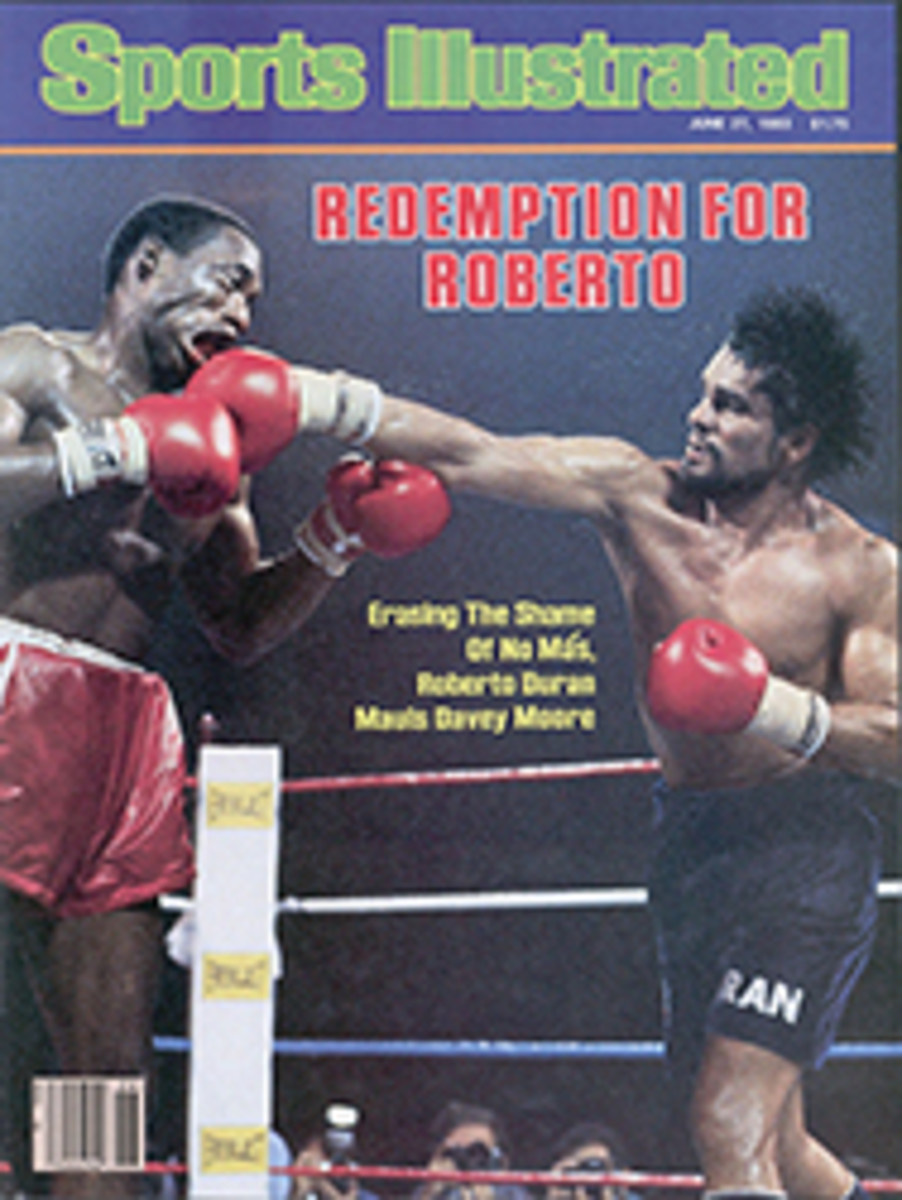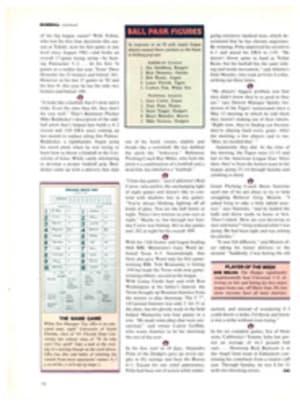
TVS FAST-PACED COVERAGE MAY HAVE INVALIDATED JOAN BENOIT'S RECORD
When Joan Benoit ran the Boston Marathon in a world best of 2:22:42 in April, a lanky man, wearing No. 14, ran conspicuously near her for most of the race. An observer might have missed the tiny microphone clipped to his singlet and the transmitter in his hand. But these were what New Zealand Olympic marathoner Kevin Ryan, sort of a high-tech Homer, used to chronicle Benoit's odyssey for a Boston television station. His coverage, however, has now resulted in a controversy that may render Benoit's mark invalid as an American record.
"Ryan made the offer [to cover the leading woman in the race], and we took him up on it," says Stan Hopkins, executive producer of the marathon telecasts for WBZ-TV. "Before Ryan came along we weren't aware that there was a world-class runner willing and able to do it."
The idea of employing a runner as a reporter has been used in the past as a way to research track stories for print. In 1980 Kenny Moore ran with Ellison Goodall at Boston for SPORTS. ILLUSTRATED, and Frank Shorter did the same with Grete Waitz in the '82 New York City Marathon for The Runner. Olympic-caliber athletes like Moore, Shorter and Ryan are vital to the success of such reportage. Take the case of Billy Thread-gold, who wore a Day-Glo vest to alert CBS cameramen to the lead woman during last August's 7.1-mile Falmouth Road Race. As it turned out, Threadgold, whose marathon PR is 2:28, was left in Benoit's dust after three miles. Ryan, however, kept up with her at Boston, and thus TV successfully got on the runner-reporter bandwagon for the first time.
Hopkins hired Ryan to stick by whichever woman was leading and then start giving his commentary on the first 20 miles at Heartbreak Hill, while running beside her. Benoit started at such a fast pace that Ryan chose to run with fellow New Zealander Allison Roe, expecting Benoit to slow. "By 3½ miles I knew Allison would have to make up ground," he says. "She didn't, and Joanie was gone." Ryan left Roe, caught up with Benoit at 6.2 miles and stayed with her to the end of the race, delivering two segments of commentary—one at Heartbreak and the other at the finish.
That wasn't the end of the story. Because Ryan ran most of the marathon next to or slightly ahead of Benoit, he has been accused of pacing her to her record, which, according to a strict interpretation of The Athletics Congress (TAC) rules, could make Benoit's time invalid for American record consideration.
"This whole thing is so outrageous," says Bob Sevene, Benoit's coach. "TAC sanctioned the race. It allowed the TV cameras. It allowed Kevin Ryan. I can't believe how such a great performance has become clouded."
"I didn't pace her," says Ryan, "I was only doing my job. At 10k I heard her ask for a split so I told her, and at 15 miles she said her feet were sore, and that's about it. I wasn't urging or controlling the pace. She controlled her own pace."
The problem isn't so much that Ryan ran with Benoit, but the way he chose to run with her—ahead or at her side instead of behind her. That brought up the question of pacing. TAC considers pacing to be a form of illegal aid or assistance from an athlete who has no intention of competing in the race. The potential benefit of pacing is that an athlete can simply lock into the tempo set by the pacer and be relieved of the mental tension of handling strategy. In road racing the problem of pacing is generally confined to women runners competing in mixed races because world-class male runners are faster than world-class females. When two women or two men run side-by-side to help each other toward a record, it's "pacing" by definition but is more likely to be accepted as competition. But if a mixed pair is running together, suspicions are aroused.
At issue: How do officials distinguish between a man who happens to be on the same pace as a woman and a man who sets the pace for a woman? "It's difficult to monitor," says Nina Kuscsik, chairman of Women's Long Distance Running, a road-racing arm of TAC. But even if it weren't, Kuscsik believes records set in mixed and women's races should be listed separately. "Separate records give us some basis of comparison," she says. "Joan didn't break the record [only] because Ryan was pacing her; she would have broken it anyway. But she did have an advantage."
In track and field women's marks are recognized as records only in women's races, not in mixed ones. But because so many major road races are mixed, women would be unfairly penalized if the same rule applied to road racing.
Even segregated races haven't prevented pacing. What about rabbits on the track who blaze milers through the early laps and then drop out, or coaches who call splits from the sideline? Even in men's road races, who's to say that the pace car doesn't help the lead man? And finally, does it matter? "Well, a rule is on the books," says Bob Hersh, TAC records chairman. "We should look at its intent and enforce it, strike it or amend it."
"Personally, I would prefer that Joan's mark stand, but she was paced," says Jennifer Young, an executive of the National Running Data Center, official keeper of records for TAC. "Kevin Ryan can run at least 10 minutes faster than he did. Technically speaking, his presence gave Joan an advantage the other women competitors didn't have. NRDC wants to keep the marks from mixed races equivalent in value to women's race marks. That's why we're trying to clarify this women's pacing thing."
The controversy should be resolved in December at a meeting of the TAC Records Committee. "This is a question that has never come up before," says Hersh. "We expect a lively discussion."
PHOTO
HEINZ KLUETMEIER

